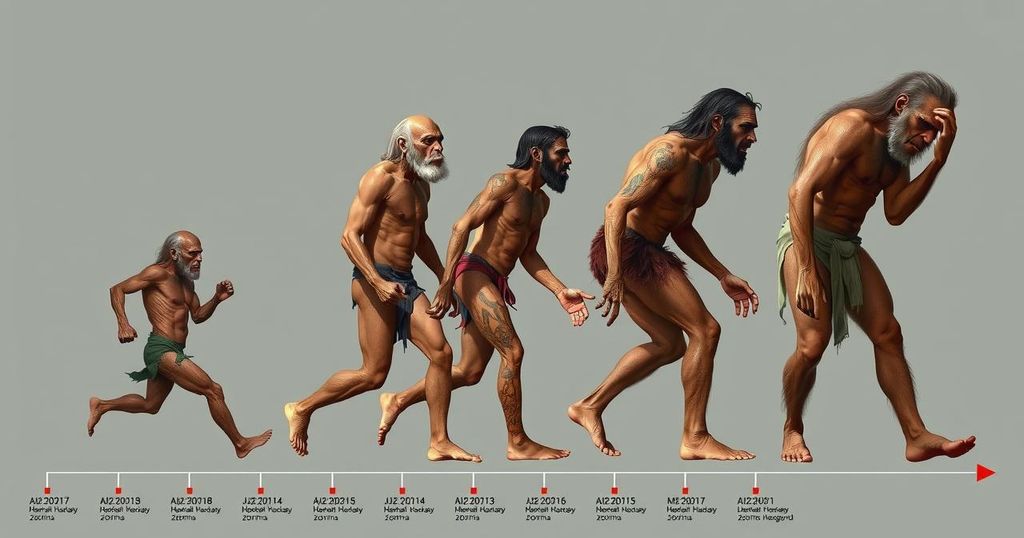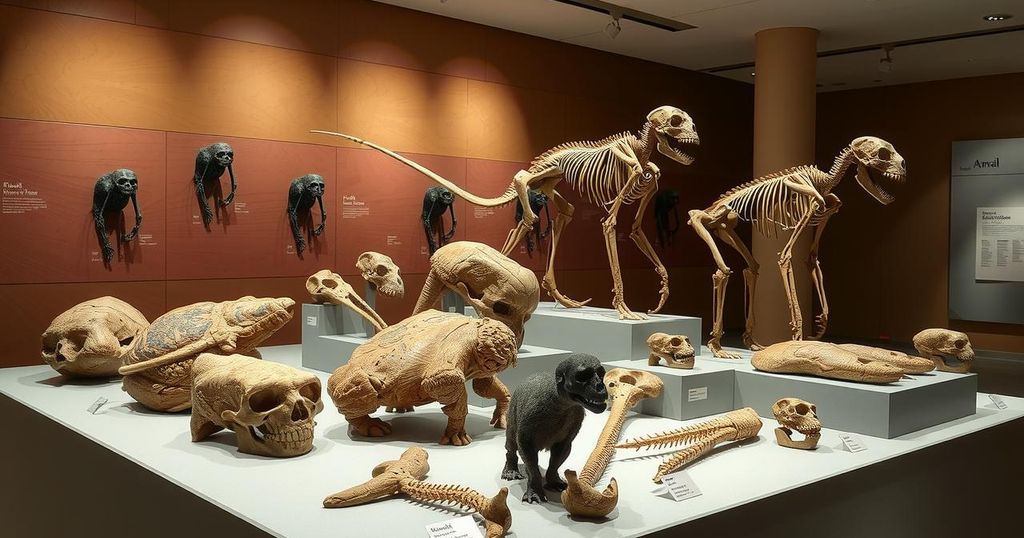Science
Tech
AFRICA, ASIA, BENJAMIN PETER, BERKELEY, CALIFORNIA, BERKELEY, CLINICAL TRIALS, EURASIA, EUROPE, GERMANY, LEIPZIG, LEONARDO IA, MAX PLANCK INSTITUTE FOR EVOLUTIONARY ANTHROPOLOGY, MEDICINE, NEW YORK, NORTH AMERICA, NUTRITION, PRI, PRIYA MOORJANI, RESEARCH, SCIENCE, TECHNOLOGY, UNITED STATES, UNIVERSITY OF, UNIVERSITY OF CALIFORNIA
Rajesh Choudhury
0 Comments
Revealing Our Origins: New Insights into Neanderthal Interbreeding with Modern Humans
An innovative analysis of ancient human DNA presents a refined timeline of Neanderthal interbreeding with modern humans, starting about 50,500 years ago and lasting for 7,000 years. This genetic exchange has contributed to 1%-2% of modern Eurasian genomes, enhancing our understanding of human migration and health.
A groundbreaking analysis of ancient DNA sheds new light on the intriguing interbreeding between Neanderthals and modern humans, providing a clearer timeline for their interactions. This study reveals that these encounters began approximately 50,500 years ago and persisted for about 7,000 years, coinciding with the gradual disappearance of Neanderthals. Importantly, this genetic exchange contributed 1% to 2% of Neanderthal DNA to contemporary Eurasian genomes, revealing keys to understanding both migration patterns out of Africa and Neanderthal influence on human health.
The researchers, including Priya Moorjani from UC Berkeley and Benjamin Peter from the Max Planck Institute, focused on the genomes of both ancient and modern individuals. Their findings illuminate the coexistence of Neanderthals and modern humans in Eurasia, highlighting a shared existence of nearly 7,000 years—unearthing crucial insights into the dynamics of human ancestry. This timeline is pivotal, as it corroborates archaeological evidence of this early interaction while refining previous estimates regarding the initial migration of modern humans from Africa, suggested to have occurred around 43,500 years ago.
Moreover, the depth of this study is underscored by its innovative approach—analyzing the genomes of 58 ancient individuals alongside 275 modern humans. This comprehensive analysis not only pinpointed the period of Neanderthal-Homo sapiens interbreeding but also revealed significant variations in Neanderthal ancestry across different populations. For instance, East Asians were found to carry roughly 20% more Neanderthal genes than Europeans, which may be attributed to complex migration patterns.
The research also examined the evolution of “Neanderthal deserts”—regions in modern genomes devoid of Neanderthal genes, indicating certain genetic variants were detrimental to modern human survival. Early modern humans already displayed these deserts, suggesting a rapid adaptation following interbreeding. Conversely, beneficial Neanderthal genes related to immunity and metabolism persisted, illustrating their potential advantages for survival in harsh environments.
In a world where ancient and modern collide, the legacy of Neanderthals emerges through our DNA, echoing tales of adaptation and survival. As scientists delve deeper into our genetic past, understanding how these early interactions shaped our ancestors’ resilience offers profound insights into the complexities of our shared history.
The enduring relationship between Neanderthals and modern humans is a mystery that blends archaeological evidence with genetic analysis. This latest study, drawing from ancient and contemporary genomes, provides a timeline for interbreeding, emphasizing a critical period of coexistence that profoundly influences our understanding of human migration and health. By unraveling the intricacies of Neanderthal genetics within modern populations, researchers aim to piece together the puzzle of how our ancestors adapted and thrived amidst changing climates and challenges of their time.
This recent analysis illuminates the profound connection between Neanderthals and modern humans, marking the timeline of their interbreeding as a pivotal moment in our evolutionary journey. The genetic legacy inherited from Neanderthals continues to shape our health and adaptations in diverse environments today. As research advances, our understanding of these ancient connections will expand, deepening insights into who we are as a species and how our past informs our present.
Original Source: news.berkeley.edu




Post Comment